How to feed cabbage to form a head of cabbage?
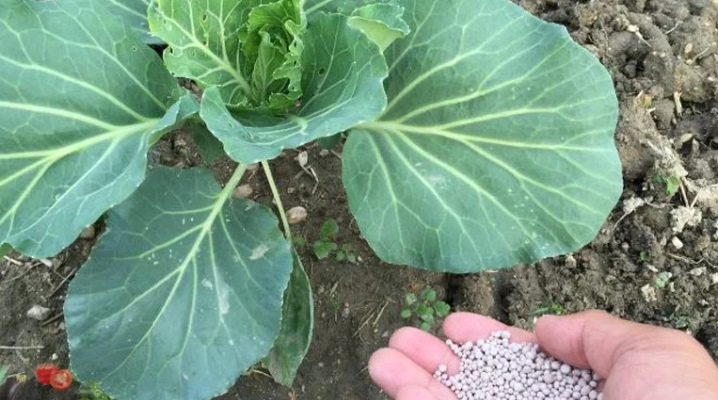
Deficiency of nutrients is one of the main reasons due to which tight, full-fledged heads of cabbage do not form on the cabbage. In this case, the leaves of the culture can be large, juicy and quite dense. What kind of dressing does cabbage lack for tying heads of cabbage? What drugs should be used to feed cabbage? What folk remedies help stimulate the formation of heads of cabbage on different types of cabbage?
Features of feeding
Cabbage is one of those cultivated plants that respond to timely feeding with great gratitude. That's why even representatives of the most productive varieties will not be able to please the gardener with tasty and large heads of cabbage in the absence of adequate and timely nutrition.
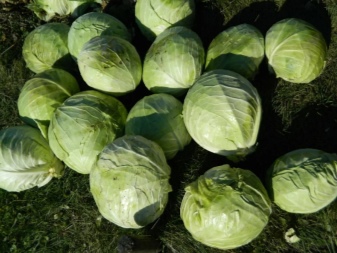

Experienced gardeners argue that cabbage should be fed at almost all stages of its development and growth, with the exception of the period of maturation of the head of cabbage. Initially, having an underdeveloped root system, cabbage needs not only its strengthening, but also procedures that contribute to the build-up of the aboveground (green) mass.
The frequency of feeding and their composition depends on the stage of development and the type of cabbage. So, at the stage of building up the green mass, plants need nitrogen-containing fertilizing, and during the formation of heads of cabbage, they also need potassium.
At the same time, for the formation of tight and crispy cabbage heads, additional fertilizing is also required, containing phosphorus, calcium, magnesium, boron and other important micro- and macroelements.
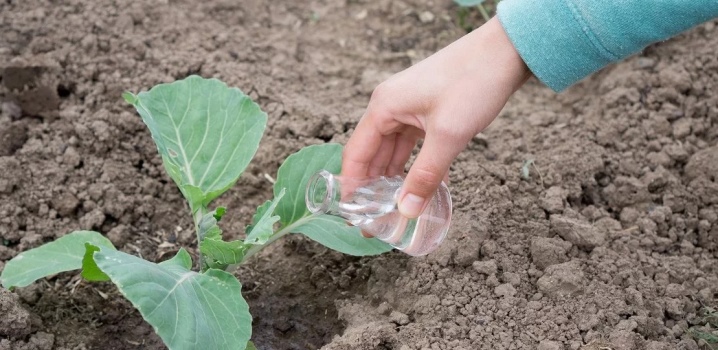
Overview of finished products
For feeding cabbage, one-component (simple) and complex fertilizers are used. They are applied in accordance with the fertilizing schedule, observing the recommended consumption rates. It is impossible to exceed the consumption rates and the recommended frequency of fertilizing in the case of using ready-made fertilizers.
"Multiflor Aqua" - a complex mineral fertilizer containing a large amount of humic acids, which are required by plants during the period of fruit formation. The product is suitable for root and foliar dressing of all types of cabbage early, middle and late ripening. This fertilizer is used in the early stages of plant development, observing the consumption rates recommended by the manufacturer and the technology for preparing the working solution. The use of "Multiflor Aqua" allows you to accelerate the growth of cabbage, stimulate the formation of heads of cabbage, improve their taste, and increase the yield. Do not use this product more than 3 times during the growing season.
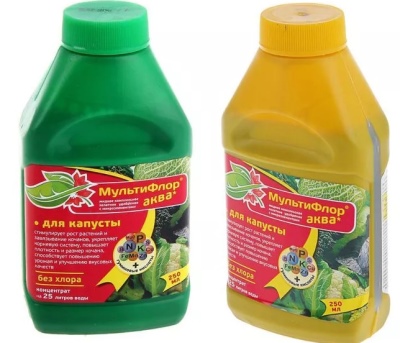
"Ovary" - a powerful stimulant of fruit formation, accelerating the formation of heads of cabbage and increasing the productivity of plants. To prepare a working solution in 1.4 liters of water, dilute 2 g of the drug. Use the resulting solution for spraying white cabbage of early, middle and late varieties twice: the first in the phase of formation of 6 true leaves and the second - during the formation of heads of cabbage.
The prescribed consumption rate is 3 liters of ready-made solution per 100 sq. m.
Planting should be sprayed in the morning or evening in dry, calm weather.
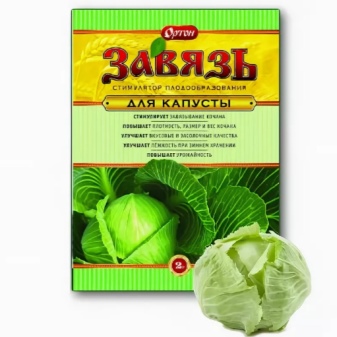
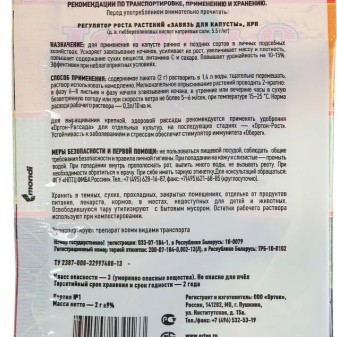
Agricola - another effective ready-made product containing all the micro and macro elements necessary for cabbage. The fertilizer is recommended for feeding kohlrabi, broccoli, white cabbage, red cabbage, savoy cabbage, Brussels sprouts and cauliflower. For the first time, young plants are fed with the drug 2 weeks after planting in the ground.Subsequent feeding is carried out at intervals of 2 weeks until mid-August.
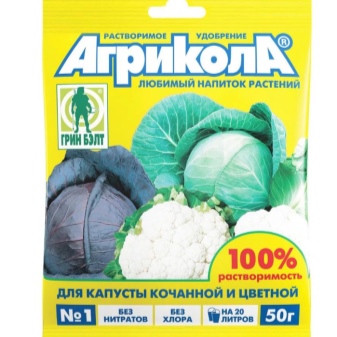
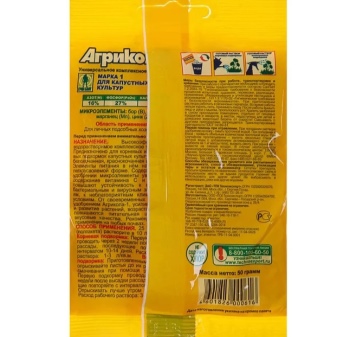
Fertika Lux (Kemira Lux) - very effective complex fertilizers, which are used for both root and foliar dressing of cabbage. To prepare a working solution, it is necessary to dilute 1 tablespoon of the drug in a bucket of water and mix well. The resulting solution is watered plants in the usual way according to the scheme below:
- the first feeding - 2 weeks after planting the seedlings;
- the second - 3-4 weeks after the first;
- the third - 2 weeks after the second.
The balanced complex of micro- and macroelements, which is the basis of these fertilizers, not only stimulates the rapid formation of large tight cabbage heads, but also contributes to the active development of plants, strengthening their immunity and increasing resistance to pests and pathogens of various diseases. It is important to note that feeding cabbage with any complex fertilizers containing nitrogen is allowed only until mid-August. If you continue to feed the cabbage with nitrogen-containing fertilizers and further, this will lead to the fact that nitrates, unsafe for human health, begin to accumulate in its heads.
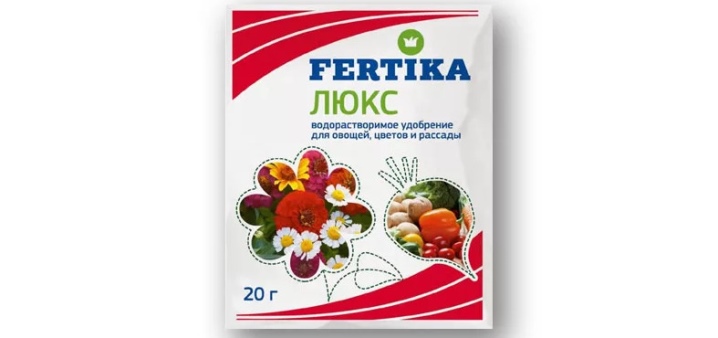
Folk remedies
To make cabbage heads tied faster, intensively increasing their size and density, gardeners use simple and effective folk remedies. Their main advantages over ready-made complex fertilizers are availability, environmental friendliness and ease of use.
Chicken droppings
This natural, environmentally friendly fertilizer contains not only a large amount of nitrogen, but also a number of extremely valuable micro and macro elements. It is important to note that it is absolutely impossible to use pure fresh chicken manure, since it can burn the roots of plants. This top dressing is used during the period when the cabbage begins to form forks.
For feeding, use a solution prepared from 0.5 kg of manure and 10 liters of water. The finished composition is kept in the sun for 2-3 days, stirring regularly. Next, 1 liter of solution is poured into the root of each plant. It is allowed to feed with this fertilizer about two times per season. A large number of dressings can cause a deterioration in the palatability of the fruit due to the accumulation of nitrogenous substances.
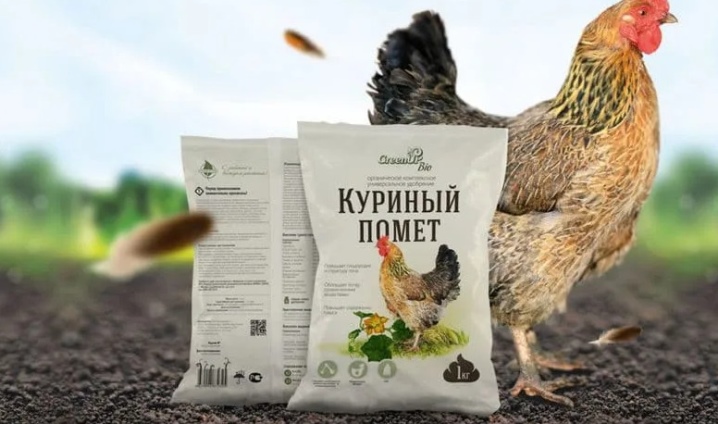
Mullein
Mullein infusion is one of the best dressings that stimulate the active formation of cabbage heads. To prepare the nutrient solution, rotted cow manure is diluted in a bucket of water (the proportions of water and manure are 10: 1, respectively) and the resulting solution is infused for 7-10 days.
The first feeding is carried out in early or mid-July, the second - after 3-4 weeks, the third - at the end of summer. Consumption rate per plant - 1 liter of solution.
You should not exceed the frequency of feeding, since the mullein, like chicken droppings, contains a large amount of nitrogen.
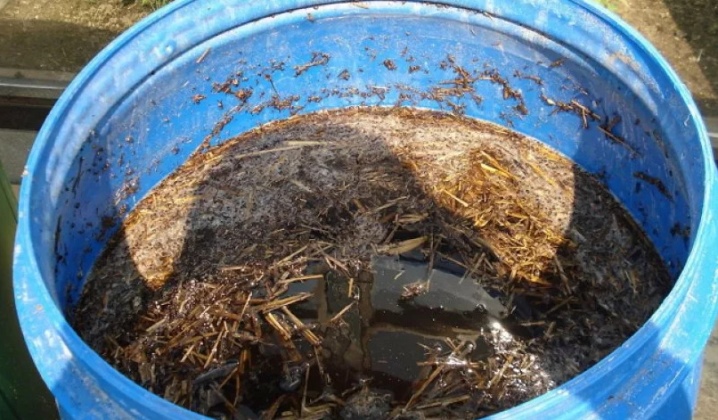
Infusion of herbs
A properly prepared herbal infusion contains almost the entire range of macro- and microelements necessary for the formation of cabbage heads. Such an infusion is prepared from mowed alfalfa, burdock leaves, wheatgrass, nettle, dandelion (in principle, any weed is suitable, except for field bindweed, which can accumulate harmful substances in itself).
The herb mass is tightly placed in a container and poured with hot water (proportions: 1 part of grass, 10 liters of water), after which it is infused for 7-10 days. Then the cabbage should be sprayed with the resulting infusion or watered in the usual way. The advantages of this "green fertilizer": the absence of chemistry in the composition, environmental friendliness, availability, simplicity and safety of use.
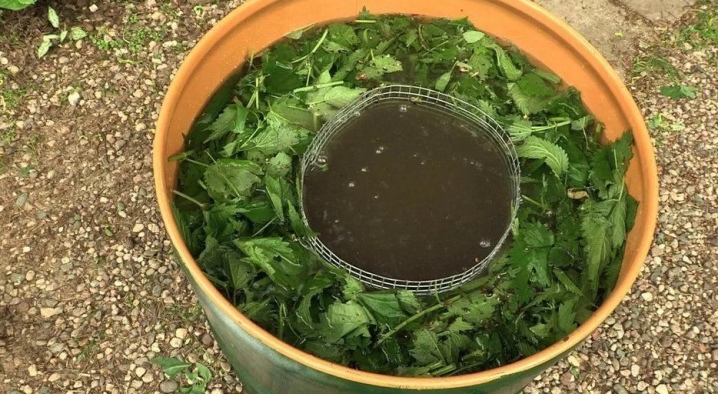
Yeast
Cabbage yeast feed contains beneficial fungal bacteria that can stimulate the heading process. To prepare such a top dressing, you must carefully dilute 100 g of live yeast in 0.5 liters of warm water and add 3 tablespoons of sugar. Then the solution is left for 2-3 days, observing the fermentation process and stirring occasionally. After that, the resulting mixture is diluted with a bucket of water and used as a concentrate for preparing top dressing. It is prepared using 1 liter of solution diluted in 5 liters of pure water. The consumption rate for root dressing of cabbage is 1 liter.
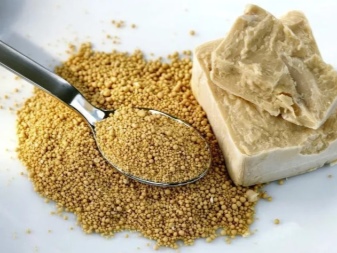

Wood ash
Burnt residues after burning wood waste are an excellent handy material that can become an excellent stimulant for cabbage. So that the plants can quickly set tight heads of cabbage, it is necessary to treat them with a solution prepared from 1 glass of ash and 10 liters of warm water. It is advisable to stand the solution for 2-3 hours before use. Next, the plants are watered with the prepared composition, spending 1 liter per 1 square meter. It should be noted that this safe, environmentally friendly and extremely effective fertilizer is suitable for feeding all types of cabbage and all ripening periods - both early, medium and late. Planting processing with this tool is allowed to be carried out 1-2 times a month.
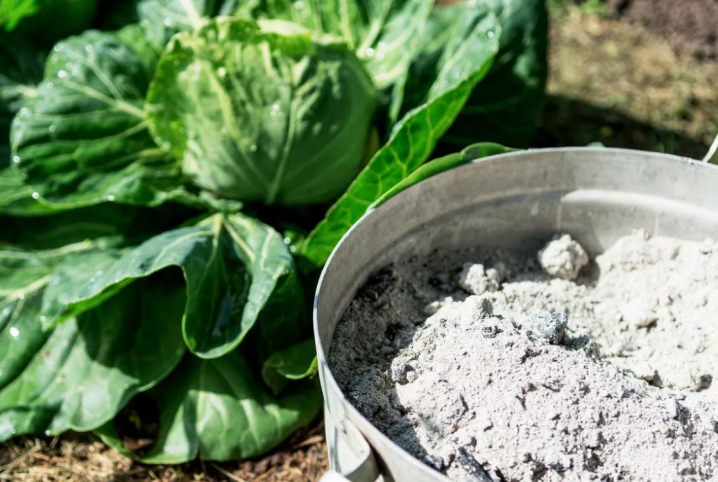
chalk
Chalk top dressing contains a large amount of calcium, which is necessary for cabbage during the period of head formation. The introduction of chalk top dressing allows not only to stimulate this process, but at the same time to improve the taste of the forming fruits.
To prepare chalk top dressing, you need to dilute 4-5 tablespoons of crushed chalk in 10 liters of warm water. Then the cabbage is poured abundantly with a chalk solution at the root. In addition, spraying of the forming fruits with the prepared solution is also allowed. The next feeding is carried out after 10-14 days.

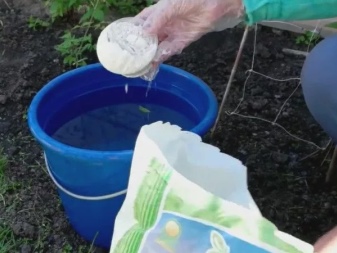
Potassium humate
Potassium humate is the most famous potassium fertilizer, which is a mixture of valuable trace elements and organic acids. The product is made on the basis of natural raw materials - coal and peat. Top dressing with potassium humate allows you to stimulate the growth of green and root mass, increase the resistance of plants to pathogens of bacterial and viral diseases, and also significantly accelerate the process of formation and maturation of heads.
During the entire growing season, potassium humate is used three times. The first time they are fed plants 10-15 days after planting seedlings in open ground. The second dressing is applied 20-25 days after the first. For the third time, the plants are fertilized with potassium humate 2 weeks after the second feeding.
For root dressings that stimulate the formation of heads of cabbage, a light brown fertilizer solution is used, prepared in strict accordance with the instructions (the consumption of the drug from one manufacturer may be 20 ml per 10 liters of water, from another manufacturer - 30 ml per 10 liters of water). The application rate for each bush is usually 400-500 ml of the finished solution.
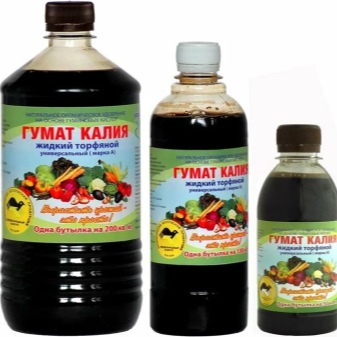
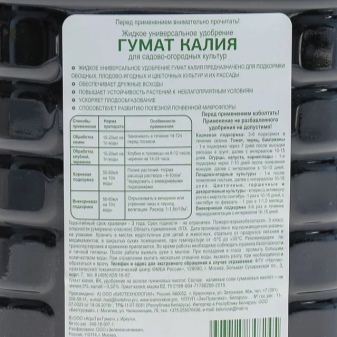
Iodine
At the stage of setting heads, cabbage can be fed with a nutrient solution containing iodine. This component not only contributes to the formation of cabbage heads, but also improves their taste, enriching them with sugars and vitamin C. In addition, iodine, which is an antiseptic agent, helps to protect cabbage plantings from numerous bacterial diseases and insect pests.
To prepare the solution, it is necessary to dilute 30-35 drops of iodine (5% alcohol solution) in a bucket of water. The resulting composition should be watered with cabbage, spending 1 liter per plant. For foliar dressing, use a solution obtained by mixing 0.5 teaspoon of iodine and a bucket of water. This product is recommended to spray young cabbage at the stage of setting heads.
When spraying young plants in the head formation phase, do not direct the stream of nutrient solution to the center of the ovary. This can lead to either rotting of the fruit or the formation of a bad, falling apart head of cabbage. Spraying with nutrient solutions should be done superficially, trying to cover the surface of the largest leaves.
It should also be borne in mind that in an effort to get the maximum yield from cabbage plantings, you should not overfeed the plants. An excess of nutrients obtained from both root and foliar dressings can impair not only the appearance, but also the taste of the fruit. If nutrients are too abundant, kale forks can become bitter, watery, or tough.
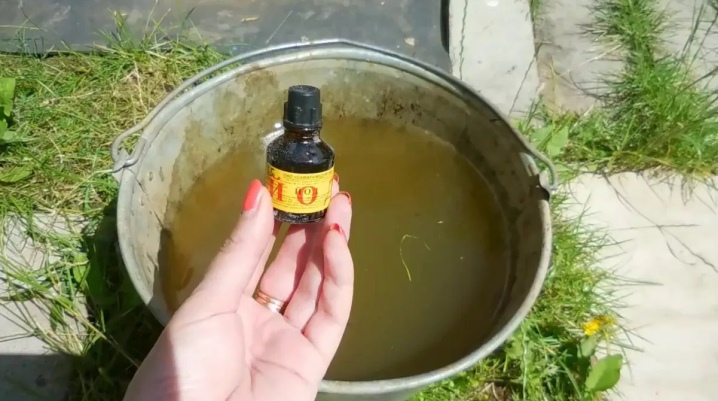
See below for one of the feeding methods.













The comment was sent successfully.